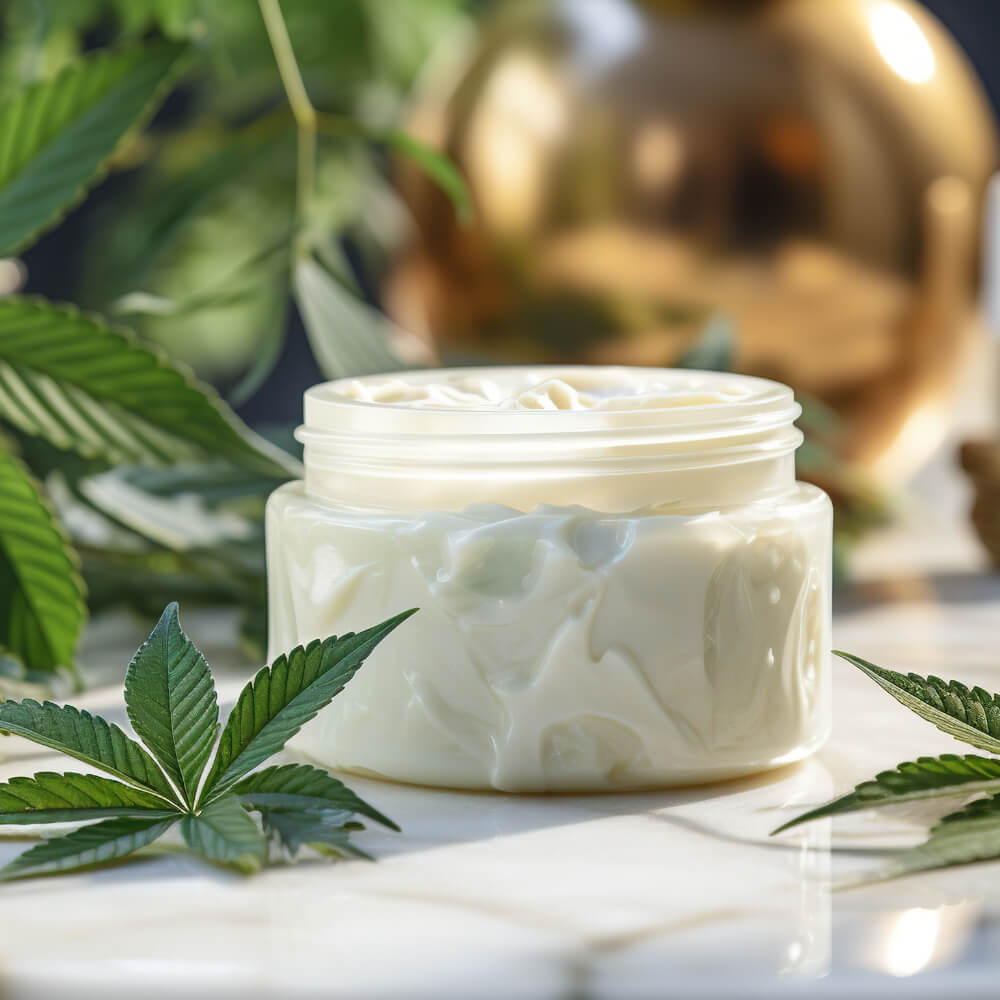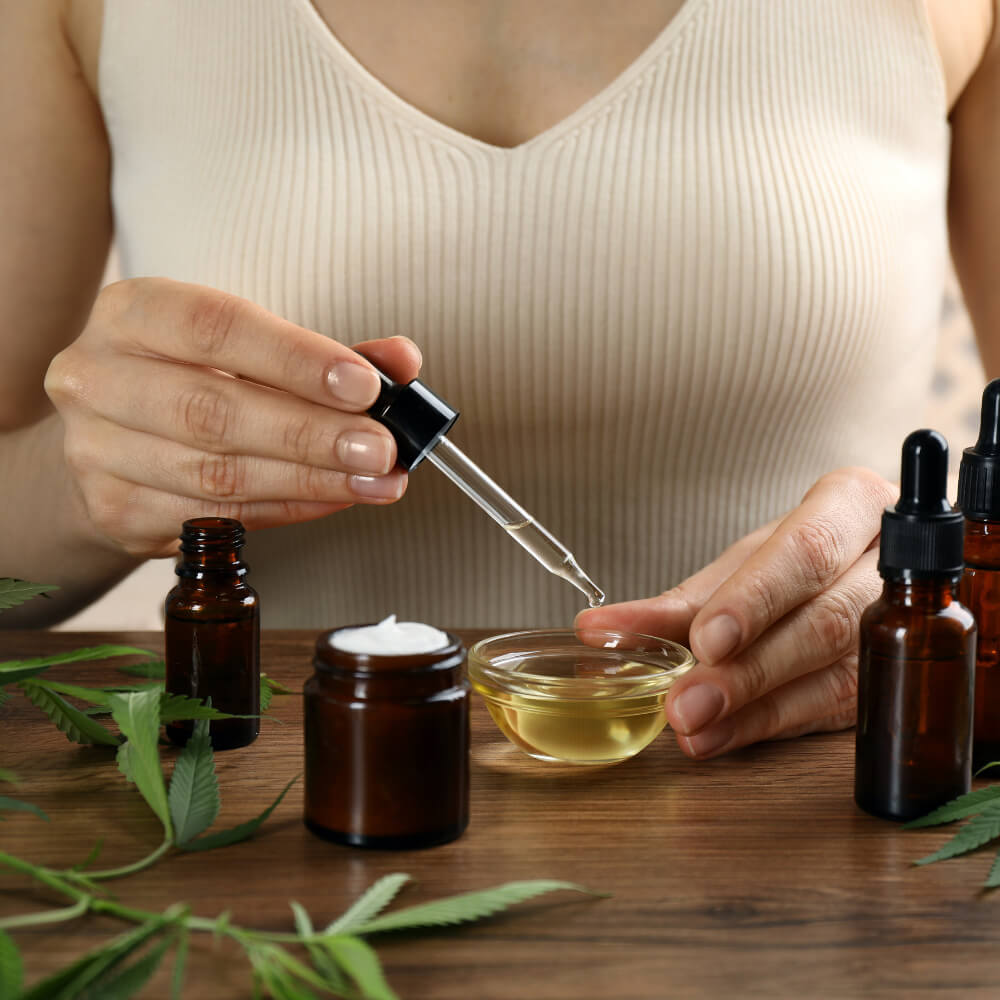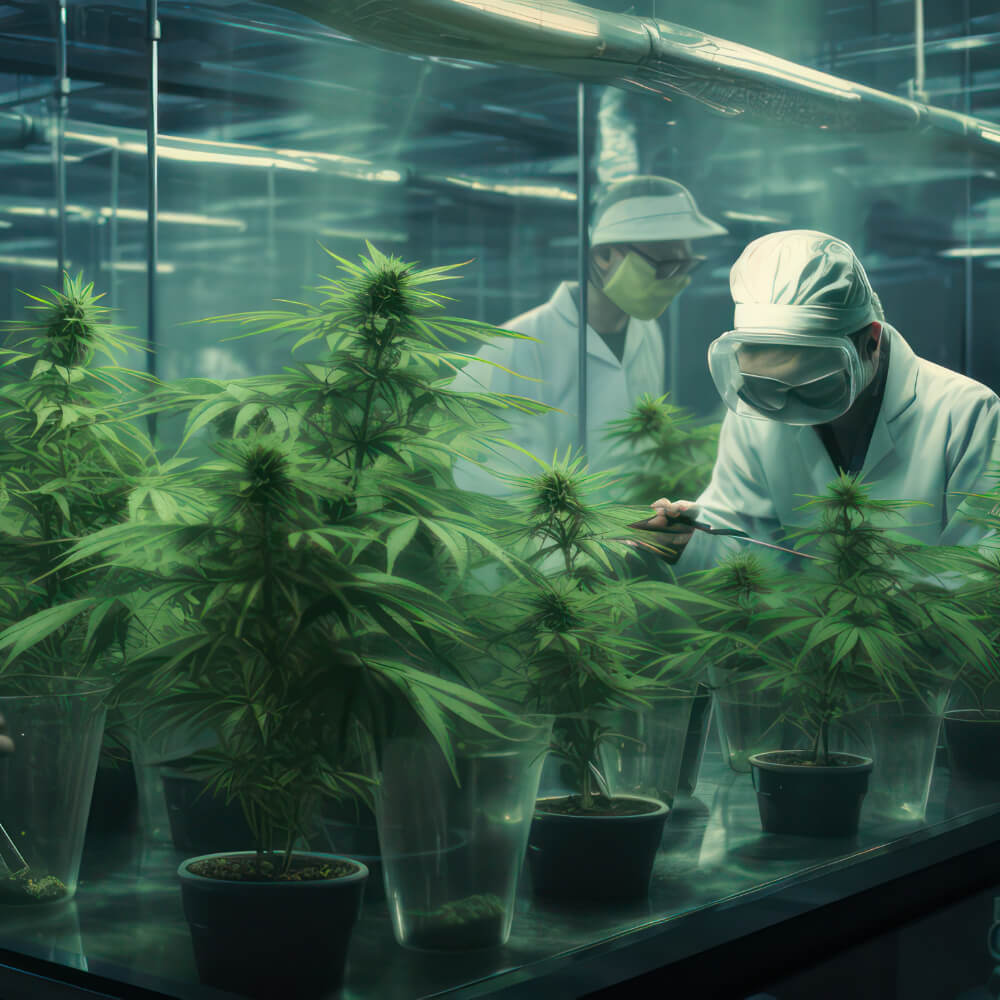Myrcene, a terpene prevalent in cannabis and diverse plant species, has garnered attention for its unique fragrance and potential medicinal properties. In this article, we aim to explore the multifaceted aspects of myrcene, delving into its definition, chemical structure, aromatic nuances, and its impact on various cannabis strains.
What is Myrcene? 
First things first; let’s understand what Myrcene is. Essentially, Myrcene is a type of monoterpene, made up of two isoprene units. It’s pretty common in nature and can be found in various plants like hops, lemongrass, and mangoes. But, it’s especially linked with cannabis, playing a big role in giving certain strains their unique smell.
Known chemically as 7-methyl-3-methylene-1,6-octadiene, myrcene boasts a molecular formula of C10H16 and a molecular weight of 136.23 grams per mole. As a volatile compound, myrcene easily evaporates, shaping the overall scent profile of cannabis.
Common Sources in Nature
Myrcene’s prevalence in nature extends beyond cannabis, with varying concentrations in different plants. While mangoes boast high myrcene levels, their presence in cannabis strains fluctuates; some exhibit high myrcene content, while others contain comparatively lower levels.
The Fragrant Profile of Myrcene: What Does it Smell Like? 
Myrcene’s aroma, characterized by earthy, musky, and herbal notes with a hint of citrus, defines the olfactory experience of certain cannabis strains. Often associated with relaxation, its woody and slightly spicy scent, when combined with other terpenes, creates a nuanced fragrance.
Myrcene’s calming influence contributes to its reputation, offering a scent akin to cloves. When blended with terpenes like limonene or pinene, the aroma gains additional layers, showcasing the complexity of cannabis fragrances.
How Myrcene Contributes to the Entourage Effect
Within the realm of cannabis, myrcene is one of many cannabis terpenes, each with a unique aroma and potential effects. Combined with cannabinoids, it contributes to the entourage effect, enhancing the overall therapeutic potential of cannabis by fostering synergistic interactions.
Medicinal Benefits of Myrcene: What are the Myrcene Terpene Effects?
Though further research is required, myrcene exhibits promise in various medicinal applications, particularly in reducing inflammation. Myrcene terpene effects, such as sedative and relaxant effects, may offer relief for individuals managing anxiety, and its potential role in sleep disorders is also under exploration.
Myrcene’s Interaction with Cannabinoids 
Getting a grasp of how myrcene affects cannabis strains involves looking at how it works with cannabinoids and the endocannabinoid system. This complex system of receptors, endocannabinoids, and enzymes is like the body’s balancing act.
Synergistic Effects with Cannabinoids like THC and CBD
Myrcene’s potential synergies with cannabinoids, such as THC and CBD, may enhance specific effects like pain relief or relaxation. However, the overall cannabis experience results from the intricate combination of various compounds, including both terpenes and cannabinoids.
How Common is Myrcene in Cannabis?
Myrcene’s prevalence in cannabis is strain-dependent. Strains with high myrcene levels often exhibit sedative and relaxing effects, contributing to the diversity of aromas and effects across different cannabis varieties.
Cannabis Strains Dominated by Myrcene
Several cannabis strains stand out for their high myrcene content, showcasing characteristics such as sedation, relaxation, and potential pain relief. These strains are often favored by users seeking stress relief or relaxation after a long day.
Let’s look at some examples together:
- Granddaddy Purple: This indica-dominant strain is renowned for its relaxing effects and often has a high myrcene concentration, contributing to its calming qualities.
- OG Kush: A classic strain in the cannabis world, OG Kush is known for its strong myrcene presence, delivering a combination of relaxation and euphoria.
- Blue Dream: This hybrid strain is famous for its balanced effects, with a potential boost of myrcene that adds to its soothing and uplifting characteristics.
- White Widow: With a potent myrcene profile, White Widow is an energizing hybrid strain that may also offer a sense of relaxation.
- Tahoe OG: An indica-dominant strain, Tahoe OG often exhibits high levels of myrcene, contributing to its reputation for providing deep relaxation and tranquility.
It’s important to note that myrcene levels can vary, and the myrcene terpene effects may be influenced by the overall terpene and cannabinoid profiles of each strain.
Some Other Potential Myrcene Terpene Effects 
While ongoing research hints at analgesic, anti-anxiety, and antimicrobial properties, conclusive evidence is yet to emerge. Myrcene’s varying levels in indica and sativa strains contribute to the diversity of effects associated with these cannabis varieties.
Myrcene Levels in Indica and Sativa Strains
Indica strains, known for relaxation and sedation, typically contain higher myrcene levels compared to sativa strains, which are linked to more uplifting and energizing myrcene effects.
Does Myrcene Make You Sleepy?
While myrcene is often associated with relaxation, myrcene effects, including potential drowsiness, are contingent on the overall composition of the strain.
Does Myrcene Get You High?
Myrcene terpene, on its own, does not produce psychoactive effects or make you “high.” The intoxicating effects of cannabis primarily come from compounds like THC. However, myrcene may influence the overall cannabis experience by synergizing with cannabinoids and other terpenes.
In conclusion, myrcene’s distinct aroma and potential medicinal benefits make it a noteworthy terpene in the realm of cannabis. When myrcene interacts with cannabinoids and the endocannabinoid system, it adds to what they call the “entourage effect,” making the potential benefits of cannabis even stronger. As we dig deeper into cannabis science, we’re expecting more discoveries about terpenes like myrcene, helping us understand the wide range of effects in the cannabis plant.







